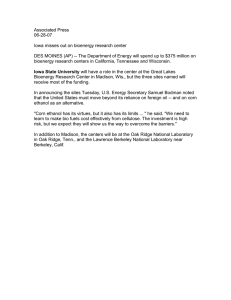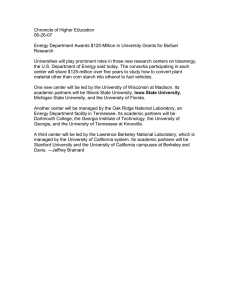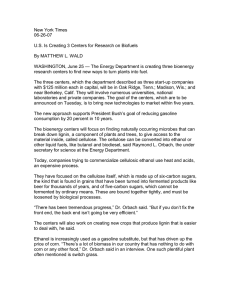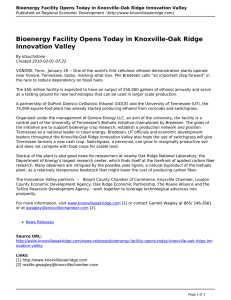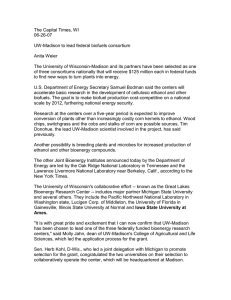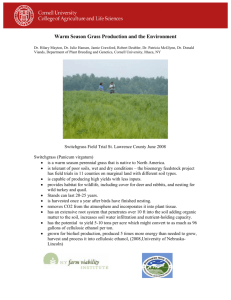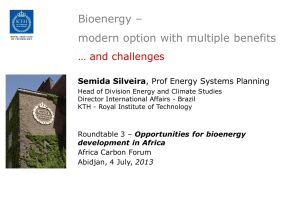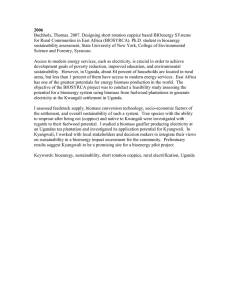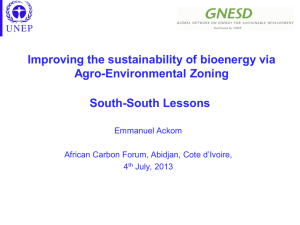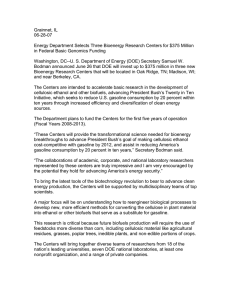Associated Press 06-26-07 Grants announced for bioenergy centers
advertisement
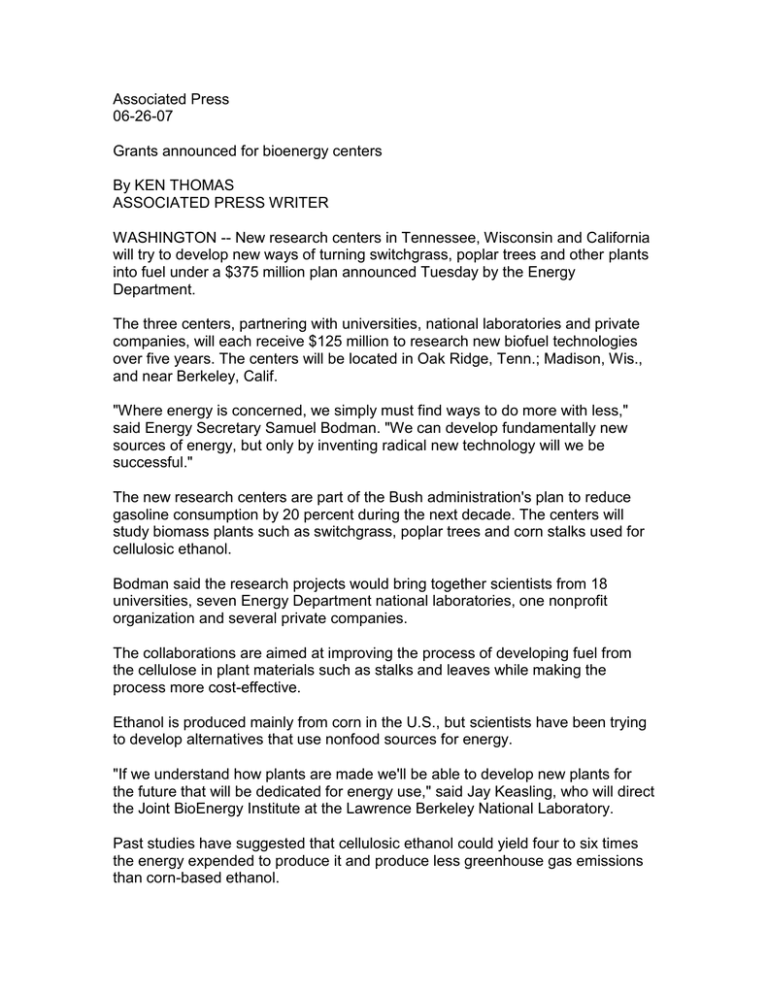
Associated Press 06-26-07 Grants announced for bioenergy centers By KEN THOMAS ASSOCIATED PRESS WRITER WASHINGTON -- New research centers in Tennessee, Wisconsin and California will try to develop new ways of turning switchgrass, poplar trees and other plants into fuel under a $375 million plan announced Tuesday by the Energy Department. The three centers, partnering with universities, national laboratories and private companies, will each receive $125 million to research new biofuel technologies over five years. The centers will be located in Oak Ridge, Tenn.; Madison, Wis., and near Berkeley, Calif. "Where energy is concerned, we simply must find ways to do more with less," said Energy Secretary Samuel Bodman. "We can develop fundamentally new sources of energy, but only by inventing radical new technology will we be successful." The new research centers are part of the Bush administration's plan to reduce gasoline consumption by 20 percent during the next decade. The centers will study biomass plants such as switchgrass, poplar trees and corn stalks used for cellulosic ethanol. Bodman said the research projects would bring together scientists from 18 universities, seven Energy Department national laboratories, one nonprofit organization and several private companies. The collaborations are aimed at improving the process of developing fuel from the cellulose in plant materials such as stalks and leaves while making the process more cost-effective. Ethanol is produced mainly from corn in the U.S., but scientists have been trying to develop alternatives that use nonfood sources for energy. "If we understand how plants are made we'll be able to develop new plants for the future that will be dedicated for energy use," said Jay Keasling, who will direct the Joint BioEnergy Institute at the Lawrence Berkeley National Laboratory. Past studies have suggested that cellulosic ethanol could yield four to six times the energy expended to produce it and produce less greenhouse gas emissions than corn-based ethanol. The three research centers include: - BioEnergy Science Center led by the Energy Department's Oak Ridge National Laboratory in Tennessee. Collaborators include: Georgia Institute of Technology in Atlanta, the Energy Department's National Renewable Energy Laboratory in Golden, Colo., University of Georgia, and the University of Tennessee. - Great Lakes BioEnergy Research Center will be led by the University of Wisconsin in Madison, Wis., in collaboration with Michigan State University. Other collaborators include: the Energy Department's Pacific Northwest National Laboratory in Richland, Wash., Lucigen Corp. in Middleton, Wis., University of Florida, Oak Ridge National Laboratory, Illinois State University and Iowa State University. - Joint BioEnergy Institute led by the Energy Department's Lawrence Berkeley National Laboratory near Berkeley, Calif. Collaborators include: Sandia National Laboratories, Lawrence Livermore National Laboratory, University of CaliforniaBerkeley, University of California-Davis and Stanford University.
